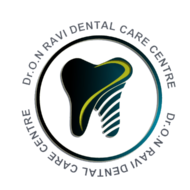Oral surgery
TOOTH EXTRACTIONS
What is Tooth Extraction?
A tooth extraction is a dental option wherein a tooth is removed from its dental alveolus or socket. Our dentists will thoroughly check your teeth, gums, and mouth before extracting a tooth. It is best to preserve your teeth, however, if it cannot be avoided, we make sure that the teeth extraction procedure is as painless as possible.
There are 2 types of extraction procedures, and they are the following:
- Simple Extractions
Simple extractions are usually performed on teeth that are visible in the mouth and is usually done under local anesthesia.
- Surgical Extractions
Surgical extraction procedures are performed when the tooth cannot be easily accessed. This happens when the tooth has not fully erupted or when the tooth has been broken under the gum line. In this procedure, the dentist may perform incision to elevate the soft tissues covering the tooth. In some cases, the tooth may be split into multiple pieces to facilitate its removal. Surgical extractions are usually performed under a local anesthesia.
Tooth extraction is the last option that may be considered as a dental solution. Consulting your dentist can help you understand why there is a need for a tooth extraction.
5 Reasons Why We Resort to Tooth Extraction
A patient has two sets of teeth – milk teeth and permanent teeth. Milk teeth are the first set of teeth that the body produces. When these set of teeth fall off, the second set of teeth which are the permanent teeth replaces the milk teeth.
Permanent teeth are meant to last a lifetime. However, teeth extraction may be necessary for the following instances:
1. Irreparable tooth damage due to severe decay
This happens when tooth decay reaches the center of the tooth which is the pulp. The bacteria produced by the decay can invade the pulp and cause an infection. In which case, a root canal treatment may help treat the infection. However, if the tooth cannot be saved, extraction is performed.
2. A viable solution to periodontal disease
Periodontal disease is an infection of the gums, periodontal ligaments, alveolar bone and other structures surrounding the teeth. The earliest stage of periodontal disease is gingivitis which is an infection of the gums. The more severe kind of periodontal disease affects the periodontal ligaments and the alveolar bone. Periodontal disease is caused by a bacteria in dental plaque which is a sticky substance that is formed on your teeth several hours after eating and without brushing. In some instances, a periodontal disease may result in the loosening of a tooth. When this happens, tooth extraction is a possible dental option.
3. Extraction may help an impacted tooth
A tooth is impacted when it is blocked from coming out, or when the gums did not fully erupt preventing the tooth to come out. This is usually the case for wisdom teeth. Your dentist may recommend the extraction of the impacted tooth to prevent it from damaging other teeth. Extracting an impacted tooth may also help lower the risk of infection and overcrowding.
4. To eliminate teeth overcrowding
The extraction of one or several teeth may be necessary to eliminate the overcrowding in the mouth. This is also recommended when the patient has to undergo an orthodontic treatment and there is no room for the teeth to move and realign. An orthodontist will check on how crowded your teeth are, and if there is enough room for them to move and give your set of teeth a better alignment. Teeth extractions are recommended when there is not enough space to straighten the alignment of your teeth.
Necessary after an accident
When an accident, like a car collision, happens and the patient requires dental treatment, the first option is always to preserve the teeth. Dental bonding, crowns, bridges or veneers may be recommended. However, if the dental issue is dreadful, a tooth extraction may be required.

